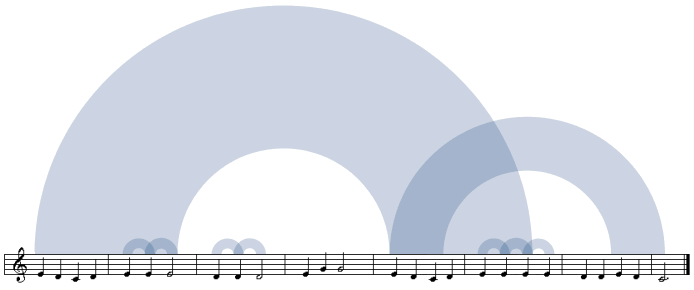More complex compositions create more intricate diagrams.
The diagram above represents
one of the Goldberg Variations. It shows that the piece
divides into two main parts,
each made of a long passage played twice--or what
a musician would call an "AABB" structure.
The diagram, however, provides much more detailed information
than the simple "AABB" notation. For instance, you can see
that the A and B passages are
loosely related, as shown by the bundle of thin arcs
connecting the two halves of the piece.
About MIDI music files
The software used in the piece analyzes "MIDI" files,
which are widely available on the web. Unlike other common
sound files (such as MP3) a MIDI file contains a
description of the notes in the musical score that is
simple and amenable to analysis.
One peculiarity of MIDI files is that they can be
divided into several tracks, which typically
represent different instruments or voices. The software
in The Shape of Song analyzes each track separately,
since each instrument often has a unique pattern of repetitions.
Because most MIDI files are made by humans playing synthesizers,
each file has unique timing and rhythm characteristics, which
influence the diagrams seen in the piece.
About the software
The software in this piece is written entirely in Java, with an applet
to handle user interface and visualization and a servlet
used to read MIDI files from the web.
<< Back to home



